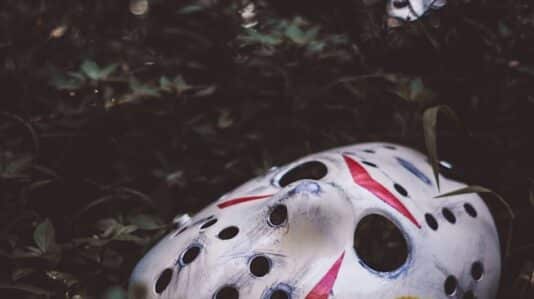Winnie-the-Pooh: Blood and Honey is a new R-rated horror film which centers around Disney’s Winnie the Pooh, but in an unexpected and shocking way. Winnie-the-Pooh: Blood and Honey focuses on Winnie the Pooh and Piglet’s struggles after being abandoned by Christopher Robin. These characters are forced to survive on their own, becoming increasingly distressed and uncontrollable, eventually leading them to becoming killers.
How can Disney’s Winnie the Pooh now be used in a horror movie?
It is clear that the qualities and traits of Pooh and Piglet in this film are starkly different from the original children’s characters, who were known for their good nature and relatable characteristics. This may seem like a blatant infringement on Disney’s Winnie the Pooh copyright, but a spin on Pooh, or any character, can be perfectly legal in particular circumstances.
Here, Pooh’s reintroduction is attributed to its entry into the public domain. A work is said to “enter the public domain” when its copyright has expired, which means the work can be used without the original copyright holder’s permission. Specifically, the work can be used in multiple capacities, such as being used to inspire new creative works, for direct and extensive quotes, to be copied and distributed without royalty fees.
Why did Winnie the Pooh enter the public domain?
For works created after January 1, 1978, copyright protection lasts for the life of an author plus 70 years. However, before the 1978 provision, copyright protection was said to last for 95 years. There was also an exception created in 1998, called the Copyright Term Extension Act of 1998, which protects a company’s copyright when the work is a “work for hire” for 95 years from first publication or 120 years after its creation, whichever ends sooner. This Act was nicknamed “The Mickey Mouse Protection Act” based on Disney’s fight to protect its iconic characters.
Winnie the Pooh was originally created by A.A. Milne in 1926. Disney acquired the rights to this original Winnie the Pooh and then created a newer version a few years later, which featured Winnie the Pooh in his iconic red shirt. The timing of this matters, as the 1926 Winnie the Pooh is what has entered the public domain after 95 years of protection.
Can Disney retain any forms of protection for Winnie the Pooh?
While Disney may no longer have copyright protection for Winnie the Pooh, there are still opportunities for legal recourse that Disney can take. Disney still maintains the rights to the Winnie the Pooh characters created after 1926, including Tigger. If Tigger or any later character is used without permission, Disney may have a valid claim for infringement. In addition, Disney also still owns the copyright for the later Winnie the Pooh, featuring Pooh in his red shirt.
In addition to copyright protection for their characters, Disney also owns trademarks for its development and rendition of Winnie the Pooh. Trademark registration can limit how other authors are able to use a public domain work. For example, if anyone uses THE Winnie the Pooh identifiable from Disney, a yellow bear that wears a red shirt, no pants, and adores honey, they may be in some legal trouble with Disney for infringing on its trademark.
This may be why the writers and producers of Winnie-the-Pooh: Blood and Honey went so far from Disney’s lazy and silly Winnie the Pooh to a cold-blooded killer that even Disney would not recognize. This Pooh has traded his red shirt and jar of honey for a plaid shirt and a hatchet.
What does this mean for other characters?
Many classic creations will be following in Winnie the Pooh’s footsteps and entering the public domain in the next few years.
- In addition to Winnie the Pooh, Piglet and Eeyore have already been released into the public domain.
- Following them, Tigger’s copyright protection is set to lapse in 2024.
- Other original-version Disney characters are also losing protection in the next few years including Mickey Mouse as depicted in “Steamboat Willie,” Pluto and Donald Duck.
- In the next ten to twenty years, characters such as Superman, Batman, Snow White and the Wizard of Oz will follow suit.
In the wake of losing copyright protection for these characters, it will be interesting to see whether Disney tries to further extend copyright protection and whether these efforts will prevail.
What can we learn from this?
When a formerly-copyrighted work is released into the public domain, this can inspire creatives to produce new works, preserve classic works for future generation, make beloved works more affordable and ultimately allow the free flow of ideas. On the other hand, authors may not appreciate the expiration of their work’s copyright after having spent time, money and energy building their copyright into a successful work. They may want to continue generating the fruits of their labor without sharing with the public.
Some works are eligible for both copyright and trademark protection. Copyright protection expires, but trademark protection can be renewed indefinitely. A federal trademark can be renewed every ten years with the US Patent Trademark Office if the owner can show that they are still using the trademark in the same way they were when it was originally issued.
Conclusion
If you are an author or creator and are worried about protection for your work, you should seek the advice of a qualified attorney to speak about copyright and trademark protection. A lawyer can help ensure your work is legally protected through all available means.
Contributions to this blog by Olivia Fortunato.





